Few things are more frustrating than stepping into a warm, relaxing shower only to have the water suddenly turn icy cold when another house faucet is turned on.
This common plumbing phenomenon has left many homeowners scratching their heads in confusion and seeking answers. This article explores the intriguing question: “Why does my shower go cold when another faucet is turned on?”
The occurrence of cold water disrupting a previously comfortable shower experience can be attributed to various factors.
Understanding the underlying reasons behind this frustrating occurrence can help you diagnose the problem, take appropriate measures, and restore your shower’s consistent water temperature.
Let’s examine the potential culprits behind the phenomenon, such as the functioning of plumbing systems, water pressure imbalances, and the role of shower valves.
Why Does My Shower Go Cold When Another Faucet Is Turned On?
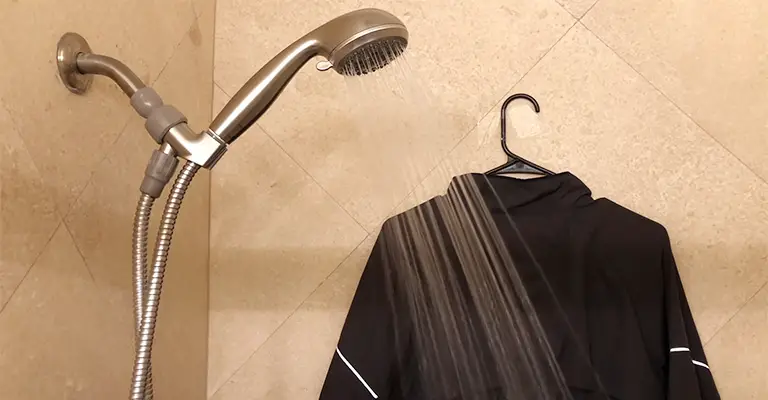
It is common for a shower to have multiple components, such as a faucet, drains, pipelines, and taps. Every household has water fixtures and pipes that are well-connected.
Occasionally, the shower might lose its heat when someone uses another faucet in the laundry or kitchen.
Due to the working of the hot water tank and the subsequent water pipes simultaneously, this happens.
In a household, water is continuously pumped in all directions simultaneously. Turning on the hot water tap in the kitchen interrupts the flow of hot water to the showerhead while the shower is running.
A hot water flow then reaches the tap through a pipe. That’s why you notice a sudden burst of cold water. Because the hot water line is in use, this is happening. There might also be a way to do this in the reverse case.
How To Prevent Your Shower From Going Cold When You Turn Another Tap On?
It is important to fix both water pressure problems and temperature problems as follows;
Increasing Water Availability
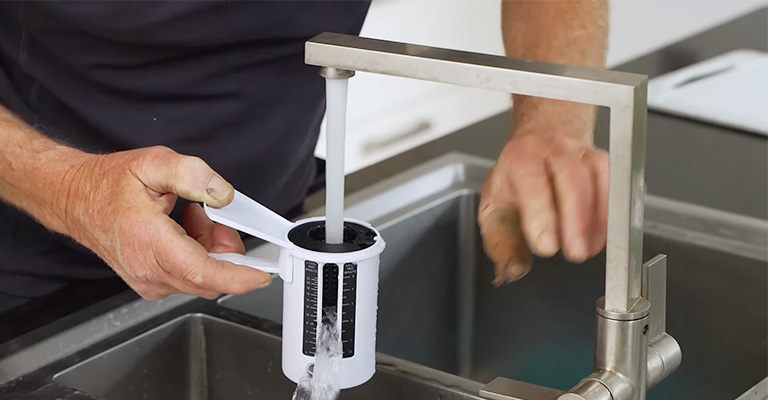
As a result of this measure, extensive changes are required to the plumbing; the plumber increases the sizes of the trunk and branch pipes to make more water available to the fixtures. Water pressure remains the same even if two fixtures are used.
Install A Water-Efficient Showerhead
A water-efficient showerhead utilizes air bubbles to limit the amount of water that passes through it. Water pressure is controlled by a combination of water-saving taps and showerheads.
Avoid Using Other Fixtures While Showering
When you’re taking a cold shower, your best option is to ensure no other household members flush the toilet while you’re in the shower. It’s a straightforward, temporary situation.
Utilize Water-Saving Taps
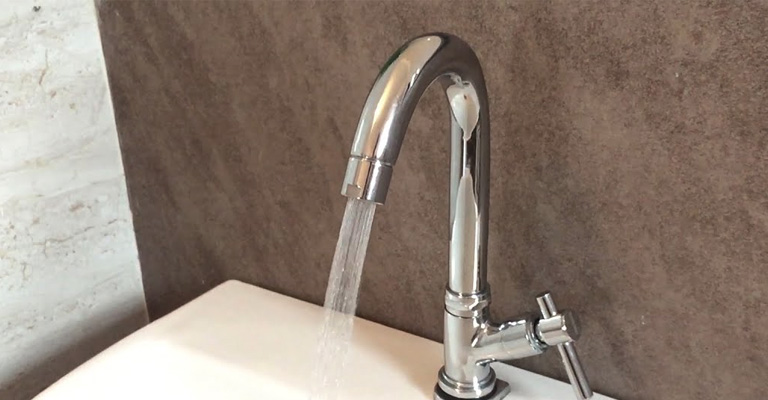
A water-saving faucet either restricts or reduces the flow of water.
In consequence, if you turn on a hot water faucet, the water that flows from it will not be under high pressure. Showers cannot produce hot water, so there will be no hot water to use.
Install A Thermostatic Mixing Valve
Hot and cold water are adjusted in the shower by using a thermostatic mixing valve. In this way, temperature fluctuations are avoided.
For example, whenever the hot water flow is lowered, a thermostatic valve automatically balances the amount of cold water blended. Despite the use of other fixtures, this system maintains a steady shower temperature.
Does Low Water Pressure Make The Shower Go Cold?
It does, indeed. The hot water from the shower runs into the open faucet when you turn on a hot water tap.
Consequently, because the hot water tap and the shower share a hot water line, the shower temporarily loses pressure. The shower now goes cold as a result.
When someone uses the sink, washing machine, or dishwasher, you might see drops in water pressure or temperature fluctuations in the shower.
What Is A Trunk And Branch Plumbing System?
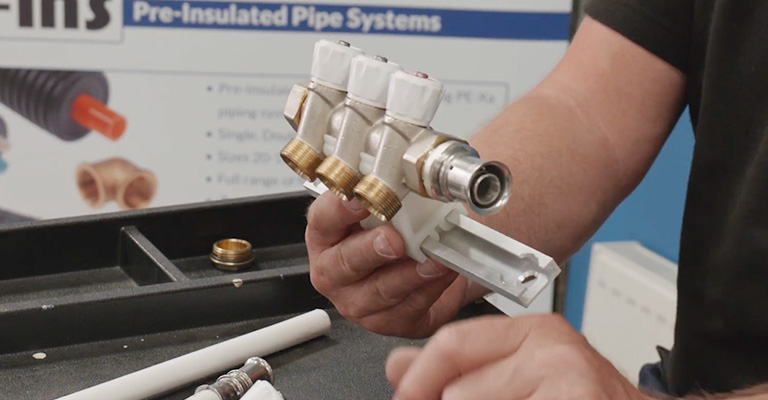
The main trunk line supplies branch lines to specific outlets in this section. You have one big pipe that runs from one side of your house to the other.
There are smaller pipes that branch off of the main pipe to connect to your shower, sink, toilet, and other faucets in your home. The flow to the other fixture reduces when one of those fixtures consumes water.
However, this configuration has the disadvantage that all of your plumbing fixtures share the same water supply.
This way, you divert hot water away from the main trunk line when you turn on a hot water tap. The cold water continues to flow into the shower, but suddenly no hot water is mixed in.
Truck and branch systems are generally designed to supply one fixture at a higher pressure. Therefore, if you open another faucet, the water pressure in the shower reduces, and it flows towards the open faucet.
The cold water in the shower is also caused by low water pressure. In the next section, we will explore that.
What Causes Low Water Pressure?
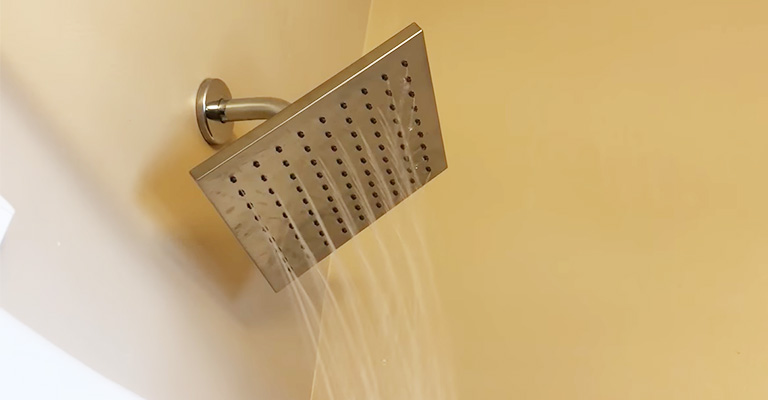
Low water pressure can cause more than just inconvenience – it could indicate a more serious issue that affects your entire water system. Among the possible causes of low water pressure are:
Pressure-balancing Shower Mixer
Do you notice a drop in water pressure as you flush the toilet?
When you have plenty of water but suddenly experience a decrease in water pressure, the shower mixing valve may be at fault. When the toilet is flushed, cold water from the shower will be pulled from the tank.
If cold-water pressure drops suddenly, the shower mixing valve will detect it. In turn, this will result in reduced hot water pressure. There is an unexpected blast of hot water. There might be a reduction in water pressure during this time.
Water Pressure Reduction Valve
A water pressure reduction valve should be located where you observe low pressure after moving into a new home.
There is a possibility that the previous owner of the property had installed one. Partially closed pressure reduction valves can also cause significant decreases in water pressure.
Mineral Buildup
An entire water flow is influenced by water quality and the age of the plumbing system.
It is common for older houses to experience limescale buildup in the pipes. Eventually, it reduces the overall flow of water in the plumbing system.
Too Small Pipe
Sometimes, the main water pipe is too small, causing the system to receive too little hot water.
Filter
There is a possibility that the filter in a hot water system can become clogged with debris over time. These filters at the inlet and outlet valves prevent contaminants from entering the system.
The water pressure will suffer if the water filter isn’t cleaned regularly. The same applies to regularly cleaning any filter at home to ensure it does not become clogged.
Leaks
Household plumbing systems are susceptible to leaks. A plumber can repair or replace the leak in your hot water system tank if you contact one.
Alternatively, you may experience high-pressure hot water problems because of a pipe leak. Locating the source of the leak is essential for proper repair.
How To Fix Your Shower Losing Water Pressure?
When you are taking a shower, you can consider making some adjustments to the plumbing system to maintain the water pressure and heat. A few points to consider are as follows:
Using a Single Fixture at a Time
If you use more than one toilet or faucet at a time, you can minimize the possibility of losing hot water when you use the shower.
Install Water-Saving Showerhead
Showerheads that are designed to save water function similarly to water-efficient faucets. Through air bubbles, it reduces the water’s pressure. A showerhead with this attachment is placed on top of the showerhead.
You can also remove it based on your needs. The ultimate plumbing solution is to use water-saving faucets and showerheads. You can maintain running water pressure if you maintain a combination of regulated water pressure.
Installing the Right Pipework
It is possible that inadequate pipe installation could lead to a plumbing issue like inconsistency in hot and cold water temperatures.
Also, there might be a capacity shortage because the demand and supply don’t match. You can hire a plumber to determine the general condition and size of the piping system.
Make Use Of Water-Efficient Taps
Installing water-efficient taps in your home is one of the best ways to save water. A water-efficient faucet or tap is designed to slow water flow across plumbing systems.
Water pipes in your home might not be something you consider replacing. Rather than using a faucet filler, you can consider using an aerator.
As an attachment on the tap head’s tip, an aerator is described as an attachment. An air compressor allows adding air to a flowing water stream. In this way, it reduces the overall flow of water across a faucet.
Do You Have Underlying Plumbing Issues?
When your water pressure is consistently low, you may find broken or blocked pipes in your line as the cause. In a similar fashion, chronically blocked drains generated by materials and objects lodged along the line can also block water flow.
You can unclog your blocked drains by asking a drain and pipe specialist or a licensed plumber. Additionally, a licensed plumber may inspect CCTV pipes to detect damage and determine how to repair it.
Also, your hot water heater may be malfunctioning. Possibly the filter has become clogged with dirt and debris. On the outlet and inlet valves, you can find these filters. In the absence of properly cleaned filters, water pressure can be affected.
Final Words
The hot water is redirected to the open faucet, so your shower stays cold. A trunk and branch plumbing system also enables one to open a tap while in the shower, which reduces water pressure and, therefore, water temperature.
The ground may be corroded, or the water heater may have issues if the water pressure is low. A thermostatic mixing valve can prevent fluctuations in water pressure and temperature. It is also recommended to use water-saving taps and shower heads.
You should consult a reputable plumbing company to determine the cause of low water pressure. You should only allow an experienced team to install and maintain the plumbing system in your home.







